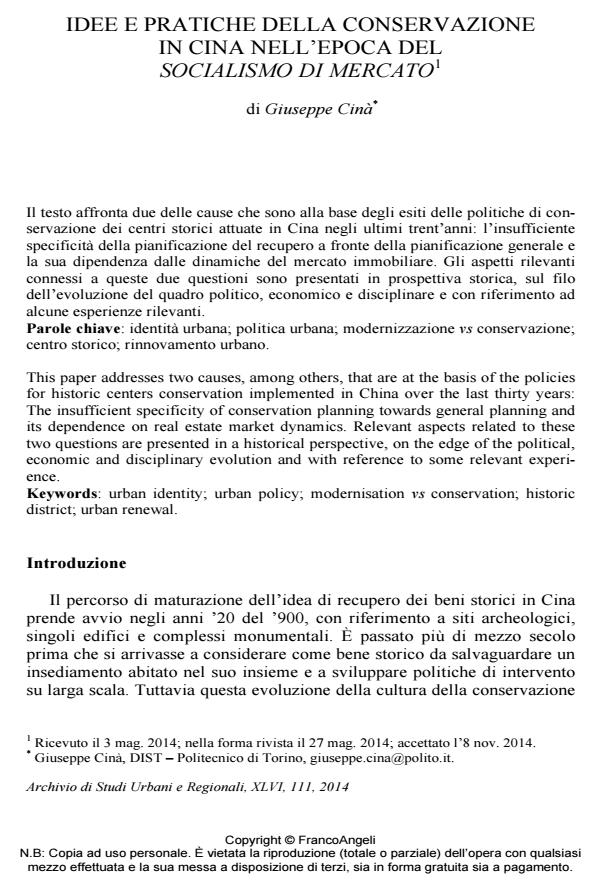Idee e pratiche della conservazione in Cina nell’epoca del socialismo di mercato
Titolo Rivista ARCHIVIO DI STUDI URBANI E REGIONALI
Autori/Curatori Giuseppe Cinà
Anno di pubblicazione 2015 Fascicolo 2014/111
Lingua Italiano Numero pagine 27 P. 5-31 Dimensione file 148 KB
DOI 10.3280/ASUR2014-111001
Il DOI è il codice a barre della proprietà intellettuale: per saperne di più
clicca qui

FrancoAngeli è membro della Publishers International Linking Association, Inc (PILA)associazione indipendente e non profit per facilitare (attraverso i servizi tecnologici implementati da CrossRef.org) l’accesso degli studiosi ai contenuti digitali nelle pubblicazioni professionali e scientifiche
Il testo affronta due delle cause che sono alla base degli esiti delle politiche di conservazione dei centri storici attuate in Cina negli ultimi trent’anni: l’insufficiente specificità della pianificazione del recupero a fronte della pianificazione generale e la sua dipendenza dalle dinamiche del mercato immobiliare. Gli aspetti rilevanti connessi a queste due questioni sono presentati in prospettiva storica, sul filo dell’evoluzione del quadro politico, economico e disciplinare e con riferimento ad alcune esperienze rilevanti.
Parole chiave:Identità urbana; politica urbana; modernizzazione vs conservazione; centro storico; rinnovamento urbano.
Giuseppe Cinà, Idee e pratiche della conservazione in Cina nell’epoca del socialismo di mercato in "ARCHIVIO DI STUDI URBANI E REGIONALI" 111/2014, pp 5-31, DOI: 10.3280/ASUR2014-111001